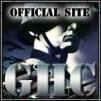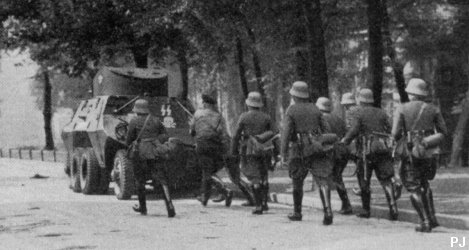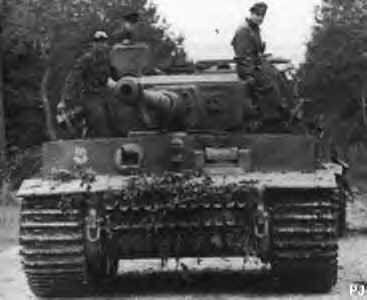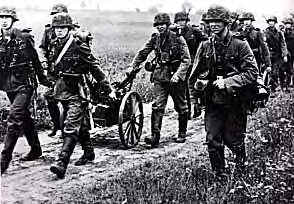|




Vote For Us
| |
Historical Facts
The Death's Head
Of all SS uniform trappings and accoutrements, the one emblem which endured
throughout the history of
the organization and became firmly associated with it was the death's head or
Totenkopf. It has often been
assumed that the death's head was adopted simply to strike terror into the hearts
of those who saw it. In
fact, it was chosen as a direct and emotional link with the past, and in
particular with the elite military units
of the Imperial Reich. Medieval German literature and romantic poems were
filled with references to
dark forces and the symbols of death and destruction, a typical example being the
following short excerpt
from an epic work by the 15th-century writer Garnier von Susteren:
´Behold the knight
In solemn black
manner,
With a skull on his
crest
And blood on his
banner...´
|
In 1740, a jawless
death's head with the bones lying behind the skull, embroidered in silver bullion,
adorned the black funeral trappings of the Prussian king, Friedrich Wilhelm
1. In his memory the Lelb-
Husaren Regiments Nos. 1 and 2, elite Prussian Royal Bodyguard units which
were formed the
following year, took black as the color of their uniforms and wore a massive
Totenkopf of similar
design on their Pelzmützen or busbies. The State of Brunswick
followed suit in 1809, when the death's
head was adopted by its Hussar Regiment No. 17 and the third battalion of
Infantry Regiment No. 92. The
Brunswick Totenkopf differed slightly in design from the Prussian one, with
the skull facing forward and
situated directly above the crossed bones.
During World War I the death's head was chosen
as a formation symbol by a number of crack German army units,
particularly the stormtroops, flamethrower
detachments and tank battalions. Several pilots, including the air ace
Leutnant Georg von
Hantelmann, also used variants of it as personal emblems.
Almost immediately after the end of
hostilities in 1918 the death's head appeared again, this time
painted on the helmets and vehicles of some
of the most famous Freikorps. Because of its association with these
formations it became symbolic not
only of wartime daring and self-sacrifice but also of postwar
traditionalism, anti-Liberalism and anti-
Bolshevism. Nationalist ex-servicemen even had death's head
rings, cuff links, tie pins and other
adornments privately made for wear with their civilian clothes.
It is not surprising, therefore, that members
of the Stosstrupp Adolf Hitler eagerly took the Toten-
kopf as their distinctive emblem in 1923, initially acquiring a small stock
of appropriate army surplus
cap badges. Their successors in the SS thereafter contracted the firm
of Deschler in Munich to restrict
large quantities of the Prussian-style jawless death's head, which they used
on their headgear for the next
11 years. As Hitler's personal guards they liked to model
themselves on the Imperial Bodyguard llussars,
who had become known as the 'Schwarze Totenkopfhusaren' or 'Black Death's Head
laussars',
and were fond of singing their old regimental song with its
emotive verse:
'In black we are dressed,
In blood we are drenched,
Death's head on our
helmets.
Hurrah! Hurrah!
We stand unshaken!' |
 |
 |
When, in 1934, the Prussian-style
Totenkopf began to be used as an elite badge by the new army
Panzer units (which were, after all, the natural successors to the Imperial
cavalry regiments), the SS
devised its own unique pattern of grinning death's head, with lower jaw, which
it wore thereafter.
The 1934-pattern SS Totenkopf ultimately took various forms
right-facing, left-facing and front facing and appeared on the
cloth headgear of all SS members and on the tunics and vehicles of the SS-
Totenkopfverbände and Waffen-SS Totenkopf- Division. It was the
centerpiece of the SS Death's
Head Ring, and could be seen on dagger and gorget chains, mess jackets, flags,
standards, drum covers,
trumpet banners and the SS and Police Guerrilla Warfare Badge.
Moreover, because of its direct
associations with Danzig, where the Prussian Leib Husaren Regiments had been
garrisoned until 1918
it was selected as the special formation badge of the SS-Helmwehr Danzig and
the Danzig Police an
Fire Service. Himmler wanted his men to be proud of their heritage, and
there is no doubt that the
honorable military associations of the German Death's Head were well used to
that end. It became
an instant status symbol in the Third Reich, and a inspiration to those who
were granted the privilege of wearing it. |
It is worth mentioning that the
Totenkopf was also borne by several Wehrmacht elements such as
the 5th Cavalry Regiment, the I7th Infantry Regiment, the naval Kdstenschutz Danzig,
and the
Luftwaffe's Schleppgruppe 4 and KampfgruPPC 5 during World War II.
(Moreover, many elite units of
other nations have likewise used the death's head emblem at various
times. These include the British
Royal Navy submarine service and '7th Lancers, Mussolini's bodyguard,
certain US special forces,
Imperial Russian cossacks, Polish tank crews, Fin- nish cavalry and the
French security police, to name
but a few. Bulgaria even had a Military Order for Bravery in World War
I which was graded 'With Skulls'.) |
The Runes
Alongside the Totenkopf, the SS-Runen or SS runes represented the elitism and
brotherly comradeship of
the organisation, and were consciously elevated to an almost holy status.
Indeed, as SS men marched off to
war in 1939 they sang their battle-hymn 'We Are All SS'('SS Wir Alle'), which
included the line 'We all
stand ready for battle, inspired by runes and death's head' ('Wir alle stehen
zum Kampf bereit, wenn
Runen und Totenkopf führen').
The word 'rune' derives from the Old
Norse 'run', meaning 'secret script'. Runes were characters
which formed the alphabets used by the Germanic tribes of pre-Christian Europe
for both magical and
ordinary writing. There were three major branches of the runic alphabet
and a number of minor variants,
and some runes doubled as symbols representative of human traits or ideals,
much as the Romans used oak
and laurel leaves to denote strength and victory. In AD 98, in his work Germania
, the historian Tacitus
described in detail how the Germans engaged in divination by runes. In
the 19th and early 20th
centuries runes began to be re-examined by the fashionable 'Völkisch' or
'folk' movements of northern Europe, which promoted
interest in traditional myths, beliefs and festivals. Among these groups
was
the Thule Society, and through his association with its activities during
1919-20 Heinrich Himmler
began to look back to the mystical Dark Ages for much of his inspiration.
He had always had a
fascination for cryptic codes and hidden messages, so it was doubly appropriate
that he should tap many of
the ideas in pagan symbolism and adopt, or adapt, certain runes for use by his
SS. |

The SS descending from the Stosstrupp adopted the Prussian style jawless
Totenkopf for headgear until 1934. In that year the army’s new panzer units also
adopted the Prussian style. Thereupon the SS developed its own grinning version until the
end in 1945. It should also be noted that the Prussian style was used by the army’s
5th cavalry regiment, and the Brunswick version by the 17th infantry regiment.
Hitler created the 3rd SS Panzer Division Totenkopf just after the 1939 invasion of Poland. Totenkopf became a brutal, if courageous,
division, fighting recklessly and consistently suffering heavy casualties. Being one of
the first Waffen-SS divisions, the troops of Totenkopf
perhaps felt they had something to prove to the regular German Army who looked down on the
unit as a bunch of unsavory, fanatical troops.
Totenkopf participated in the invasion of
France, Yugoslavia and the Soviet Union.
*This website in no way condones
the atrocities committed by the Nazi party and is in no way associated with any hate group
that is. This website offers nothing for sale. This website was created as a part to
WWIIonline the game.
|






